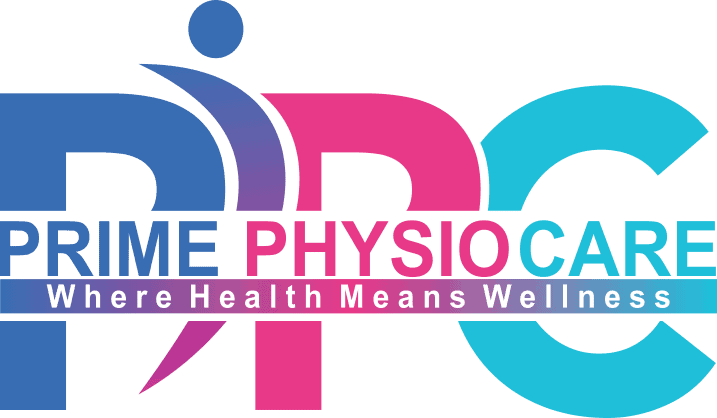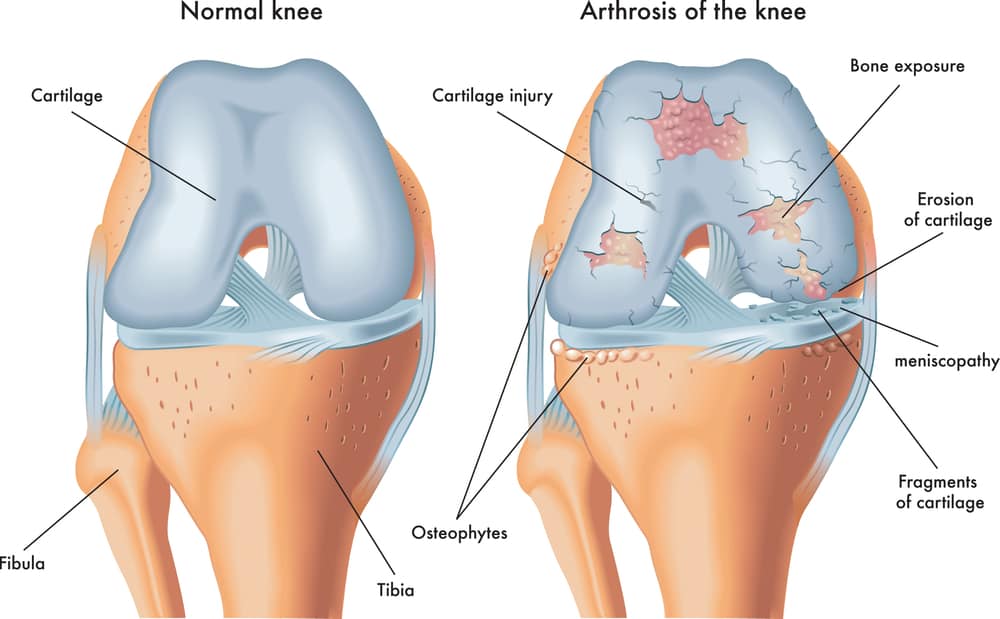All the Details to Know About the Physiotherapy for Knee
The knee joint is particularly prone to injury and other chronic conditions that cause knee pain because it handles some of the body’s most demanding tasks. If you’re among the many UK residents considering your options for treating your knee pain, knee physiotherapy is one of the most efficient, long-term solutions.
Physiotherapy for Knee
A recent analysis of data on the management of knee pain spanning nearly six decades demonstrates that movement and exercise work, when performed with the assistance of your physical therapist, is among the best methods to improve knee function and indefinitely reduce knee pain. Whether you have an acute sporting injury or more chronic pain from osteoarthritis, physiotherapy for knee is incredibly beneficial for knee pain. Physio exercises for the knee are a great choice to help you improve because they are movement and function experts.
Common Causes of Knee Pain
Knee pain is a common symptom of childhood growth spurts, sports-related injuries, falls, or aging-related wear and tear. Knee pain can be brought on by muscles, ligaments, tendons, cartilage, or meniscus. It can also sometimes refer to the lower back or the hip joint.
Acute knee injuries are common in sports that involve quick acceleration or deceleration, twisting, kicking, or abrupt changes in direction. Knee pain may start up more gradually during development spurts. The pain frequently occurs in kids who participate in sports that demand a lot of running, a lot of jumping and landing, kicking and squatting.
Osteoarthritis is a degenerative condition commonly known as wear and tear on the knee due to aging. When the cartilage, which acts as a natural cushion between the bones, starts to deteriorate, it occurs. The symptoms progressively worsen over time.
Best Treatment For Knee Pain
Consult your doctor or your neighborhood pharmacy about over-the-counter painkillers or anti-inflammatory medications if the discomfort persists despite your efforts to relieve it. If your knee discomfort continues, we suggest that you visit a respected knee physio or chiropractor so that they can do a whole examination and develop a treatment plan that will get you back on track quickly. Prime Physio Care has the expertise you need if you need treatment for your knee.
Knee Physiotherapy Exercises
Exercise is the best method to relieve knee discomfort. You should engage in activities that are intended only for you. It suggests exercises that are tailored specifically for you. A physio for knee pain will assess your flexibility and strength, and you’ll be given exercises to address the findings, including musculoskeletal imbalances, stiffness, or weakness.
You can do these exercises to ensure your knee is strong enough to handle all the demands and challenges of your sport if you wish to get back into it. If you use the gym frequently, it will provide you with advice on which pieces of equipment are safe to use. You can also speak with your physiotherapist or personal trainer to discuss the exercises you can and cannot do while receiving rehabilitation.
If you like to run, you can modify your running schedule while your knee heals. You will receive guidance on how frequently and how hard to run. It can also look at how you run to see if any parts of it are making you hurt.
How Can Physiotherapy Help with Knee Pain?
Your physio for the knee will thoroughly assess your knee discomfort causes and contributing factors before treating it. A physio will judge you on your strength, flexibility, and balance. They then use hands-on techniques like soft tissue massage and joint mobilizations to ease any muscular tightness or joint stiffness. They also use TENS, heat packs, and ultrasound to treat pain.
These aid in muscular relaxation and promote blood flow to the area to speed healing. You can do this physiotherapy exercise for knee pain to ensure your knee is strong enough to handle all the demands and challenges of your sport if you wish to get back into it. If you like to run, you can modify your running schedule while your knee heals.
Physiotherapy Exercises for Knee Pain
-
Straight Leg Raises
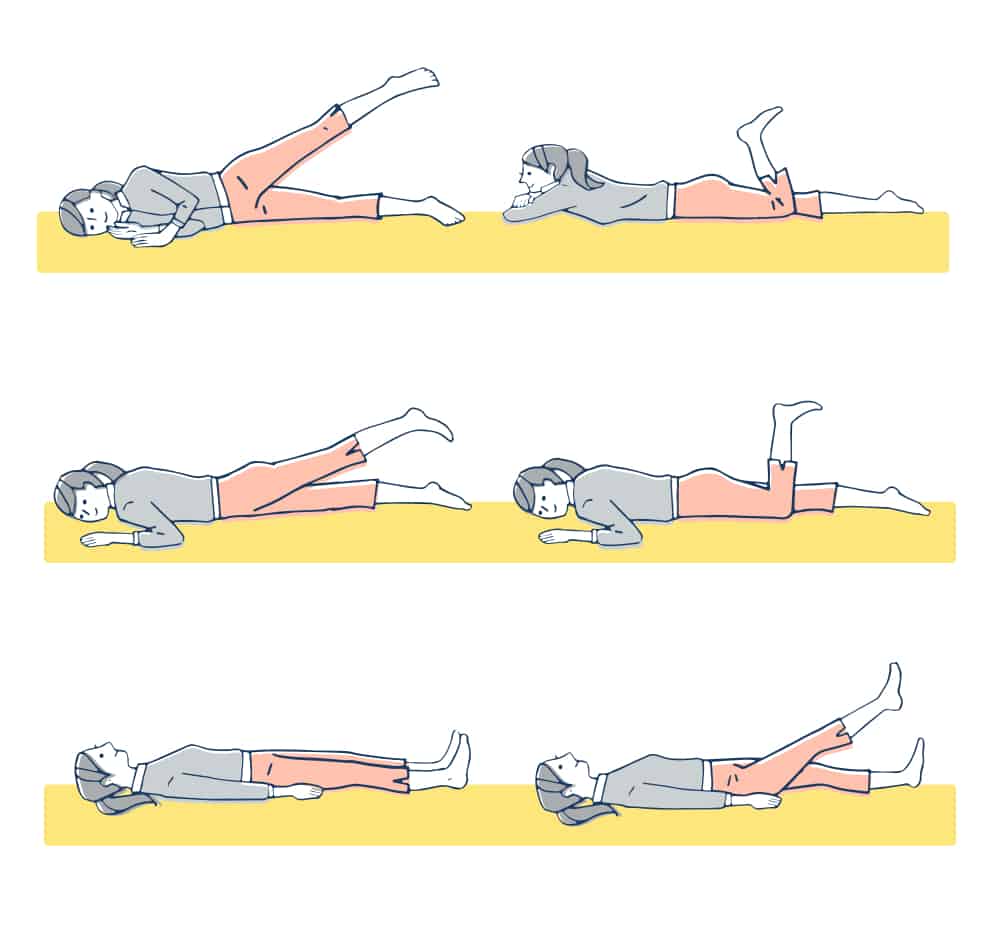
Straight Leg Raises
Start with a straightforward quadriceps exercise to strengthen the knee if your knee isn’t operating at its best. This motion does not at all put any strain on the knee. Lie on your back on the ground or another flat surface. It would be best if you bent your knee and level with the ground. Lift the opposite leg, keeping it straight to the knee on the opposite side. There are 3 sets of 10 to 15 repetitions needed.
-
Hamstring Curls
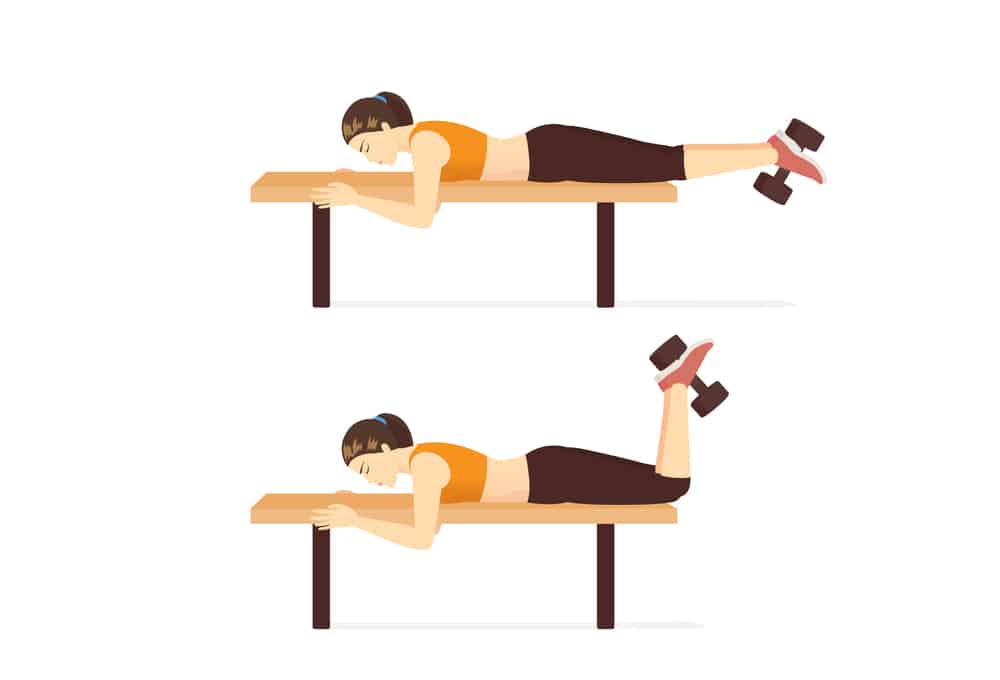
Hamstring Curls
Those are the muscles on the back of your thigh. Lie flat on your stomach. As you progressively pull your heels as close to your butt as possible, maintain that position, three fifteen-piece sets. This knee physiotherapy exercise can be done while holding on to a chair and lifting one leg at a time. If you think it’s easy, gradually increase the difficulty by adding ankle weights between 1 and 3 to 5 pounds.
-
Prone Straight Leg Raises

Prone Straight Leg Raises
Your legs should be straight when you lie on your stomach. Tighten the hamstrings of one leg and raise it toward the ceiling. After holding for three to five seconds, repeat. After ten to fifteen lifts, switch sides. You can raise the ankle weights as your strength grows. Back discomfort shouldn’t be a problem. If you do, keep your lifts to a minimum height. Consult a doctor if the pain doesn’t go away.
-
Wall Squats
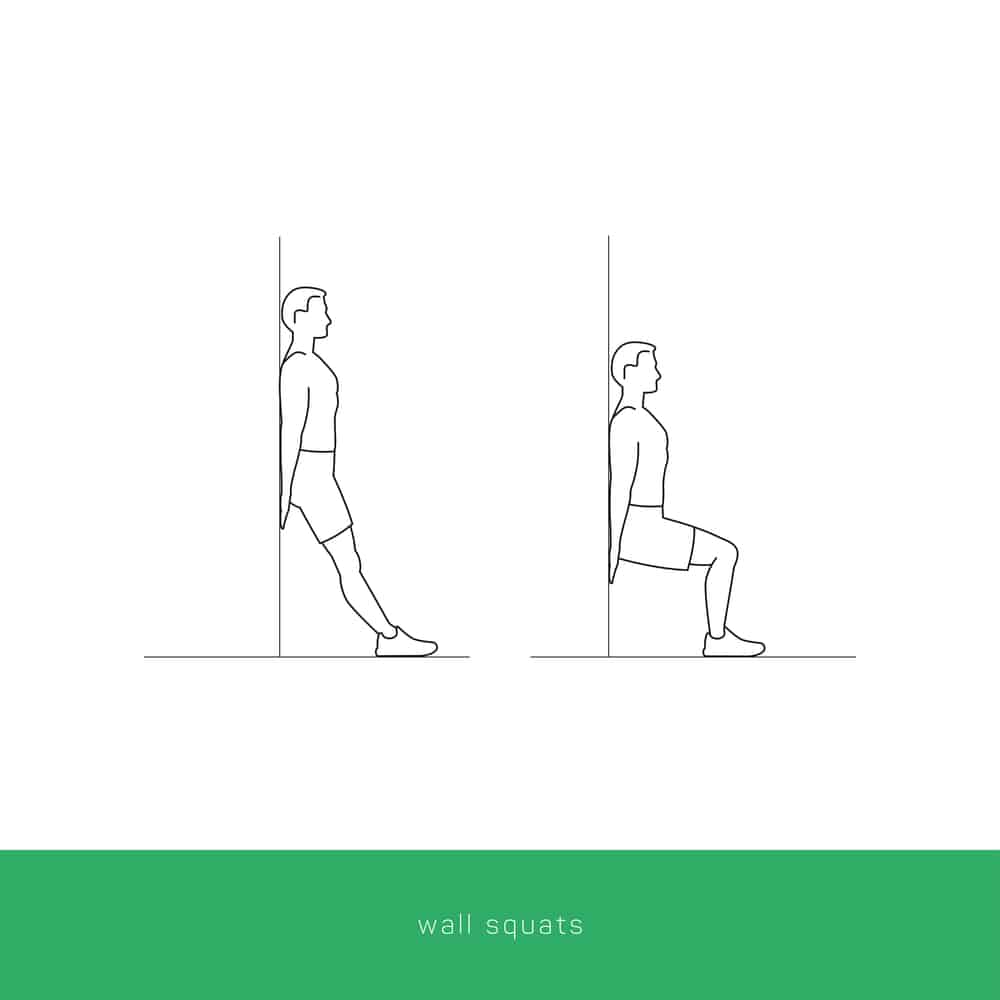
Wall Squats
This exercise is a trick that takes more skill. You’ll keep your feet on the ground. Lean against a wall with your feet about shoulder-width apart. Bend your knees progressively while keeping your back and pelvis against the wall. Hold for 5 to 10 seconds. Stay up above the ground. If you feel pressure or soreness in your knees, adjust your position. Try to hold the seated position for a few extra seconds every time you perform the given exercise for knee pain with pictures.
Physiotherapy Exercises for Knee Osteoarthritis
-
Quadriceps Setting
Disclaimer: This video is related to “Physical Therapy & Hand Clinic of Hillsboro” YouTube channel. We did not produce or own this content.
Slowly tighten the quadriceps muscle on top of the leg while pressing the back of the knee into the towel that has been rolled up.
-
Hamstring Stretch
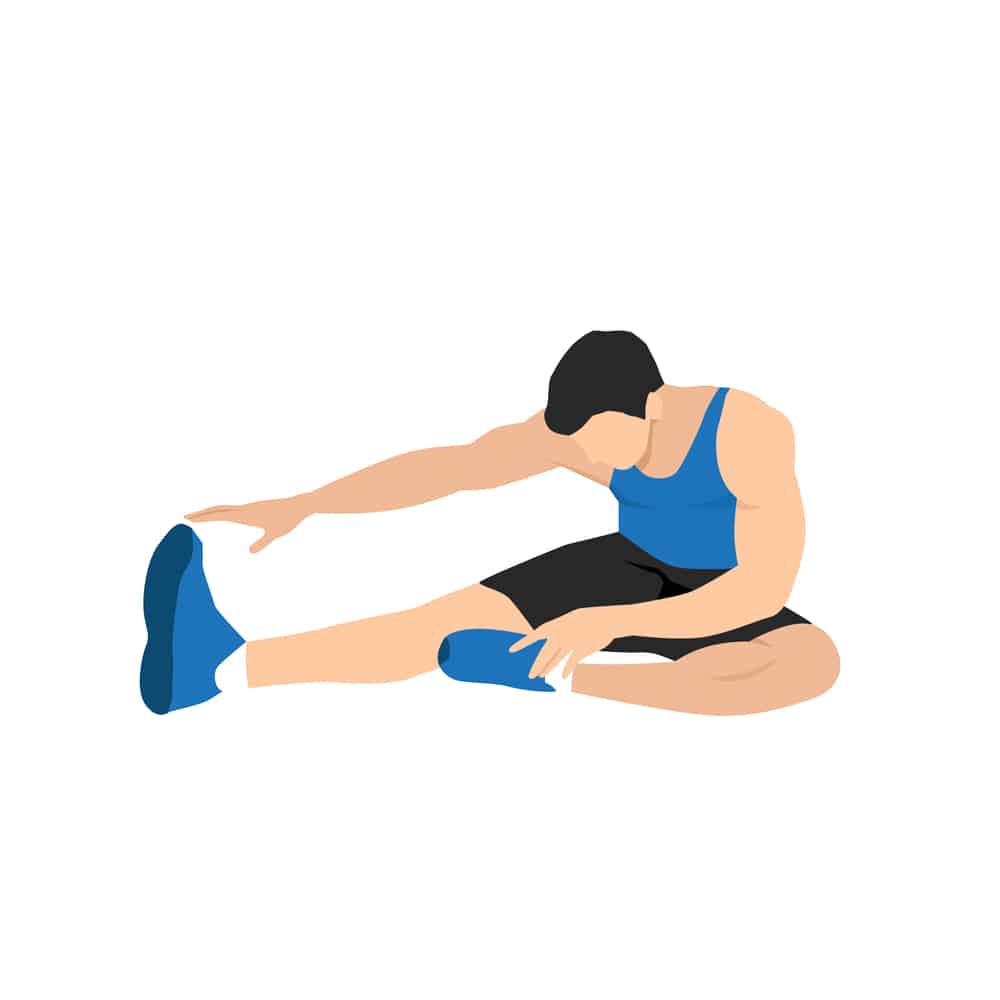
Hamstring Stretch
When you have knee OA, your hamstring muscles, which go from the back of your thigh to your knee, frequently tighten up. By extending your hamstring muscles, this knee physiotherapy exercise broadens the range of motion in your knee and improves your sense of flexibility. Utilizing the strap as support, raise your leg until you notice a slight stretch at the back of your knee and thigh.
-
Glute Strengthening
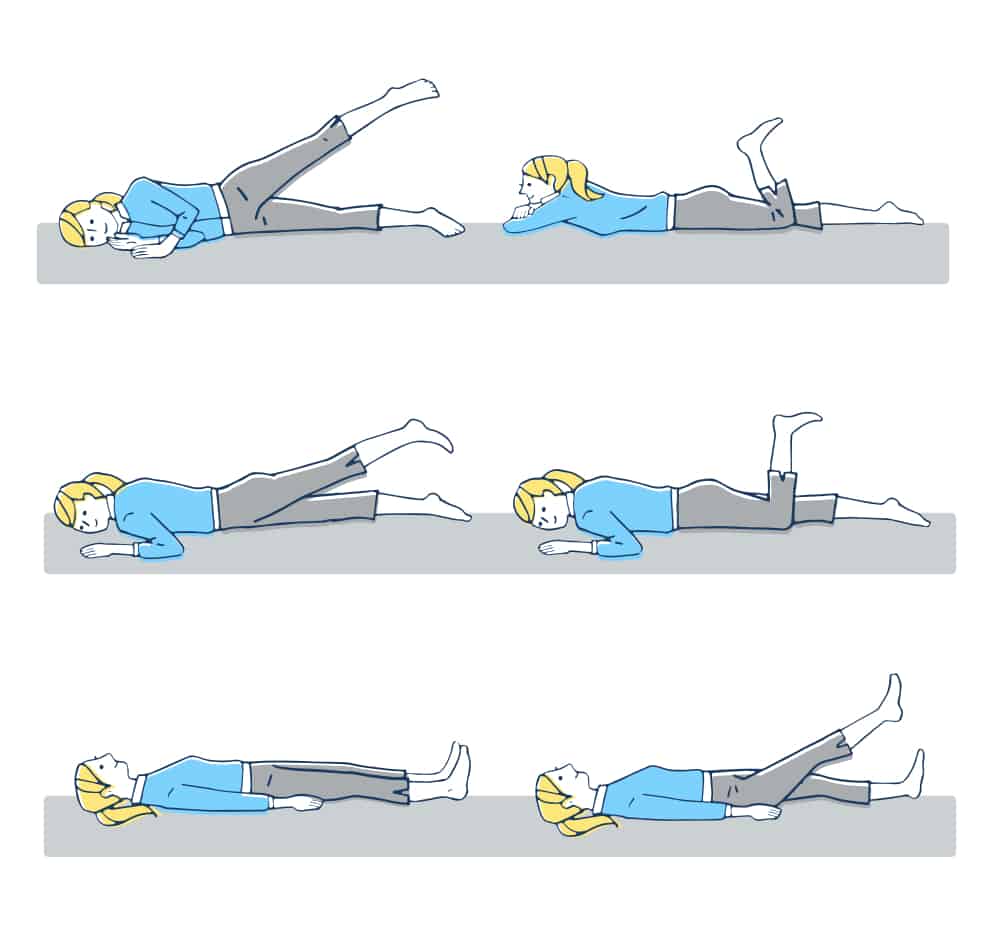
Glute Strengthening
Your capacity to control your torso and legs while standing and walking will all be enhanced by strengthening the gluteus muscles, which are the large muscles in the back of your hip. Lie on the back with a pillow under the hips to support your back. Keep the leg that has to be stretched straight, and lift it just a tiny bit off the bed by squeezing your buttocks. Reduce gradually to three sets of 10 repetitions once a day.
-
Calf Stretch
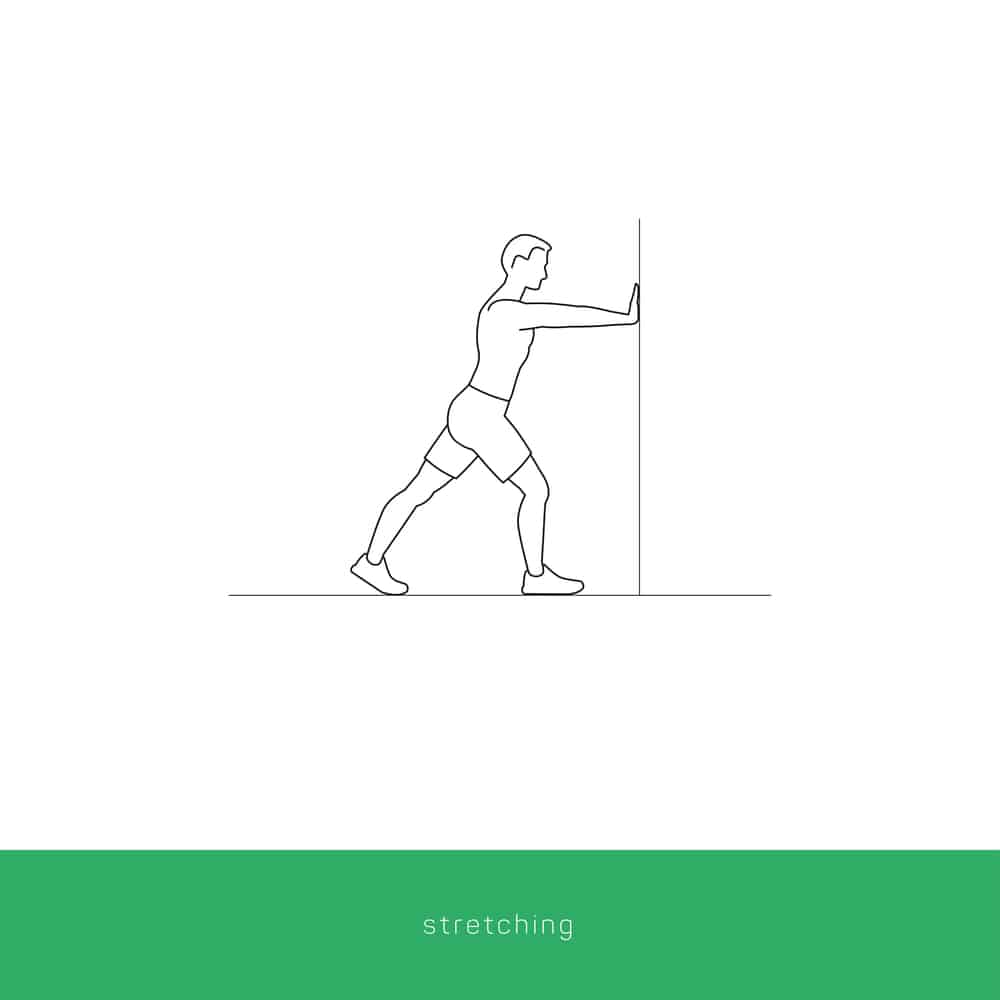
Calf Stretch
As a result of these physiotherapy exercises for knee osteoarthritis, your lower leg and ankle will continue to be flexible, which will help to improve your balance and gait. Face the wall while standing with one leg in front of the other. Slowly bend the knee in front of you while keeping the leg’s heel behind you firmly on the ground.
Physiotherapy Exercises for Knee Injury
-
Heel and Calf Stretch
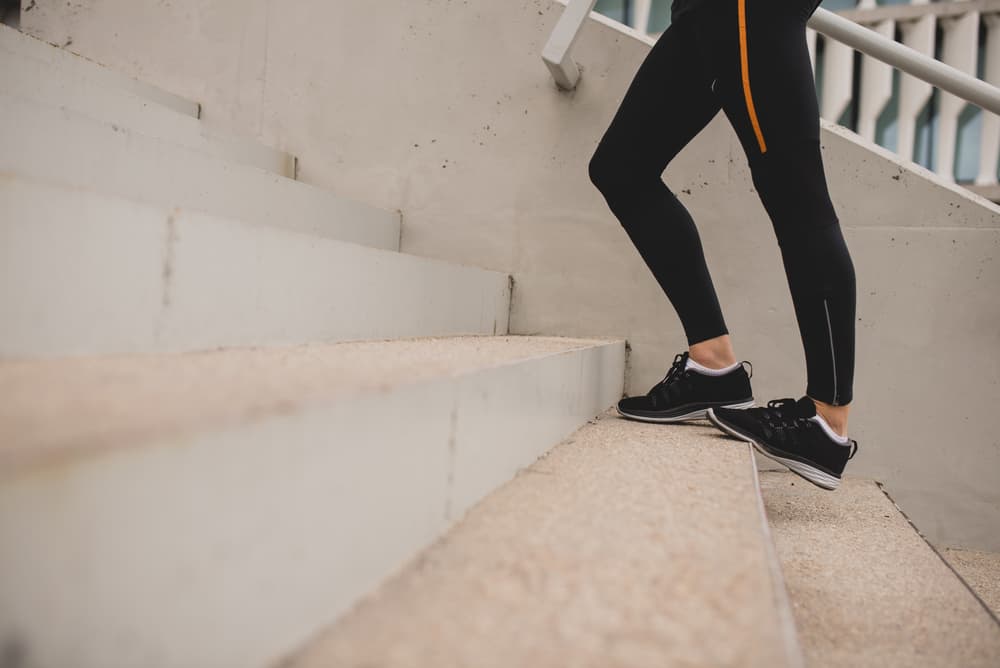
Heel and Calf Stretch
Face a wall with your back. Put your hands on the wall and take the furthest step back you can without feeling awkward. Your knees must be slightly bent, your heels flat, and the toes of both feet pointing forward. Lean into the stretch for 30 seconds. You should be able to stretch your rear leg. Continue while switching legs. Repeat these knee injury exercises twice for each leg.
-
Hamstring Stretch

Hamstring Stretch
This stretch focuses on your hamstrings, which are situated at the back of your thigh. Your glutes and the back of your leg should both feel comfortable during this stretch. You can lift one leg off the ground while keeping both knees bent and your feet flat on the ground if that is more comfortable for you. Then, gently lift your knee toward your chest while holding it with your hands behind your thigh but below the knee.
Physiotherapy Exercises for Knee Rehabilitation
-
Squats With a Weight
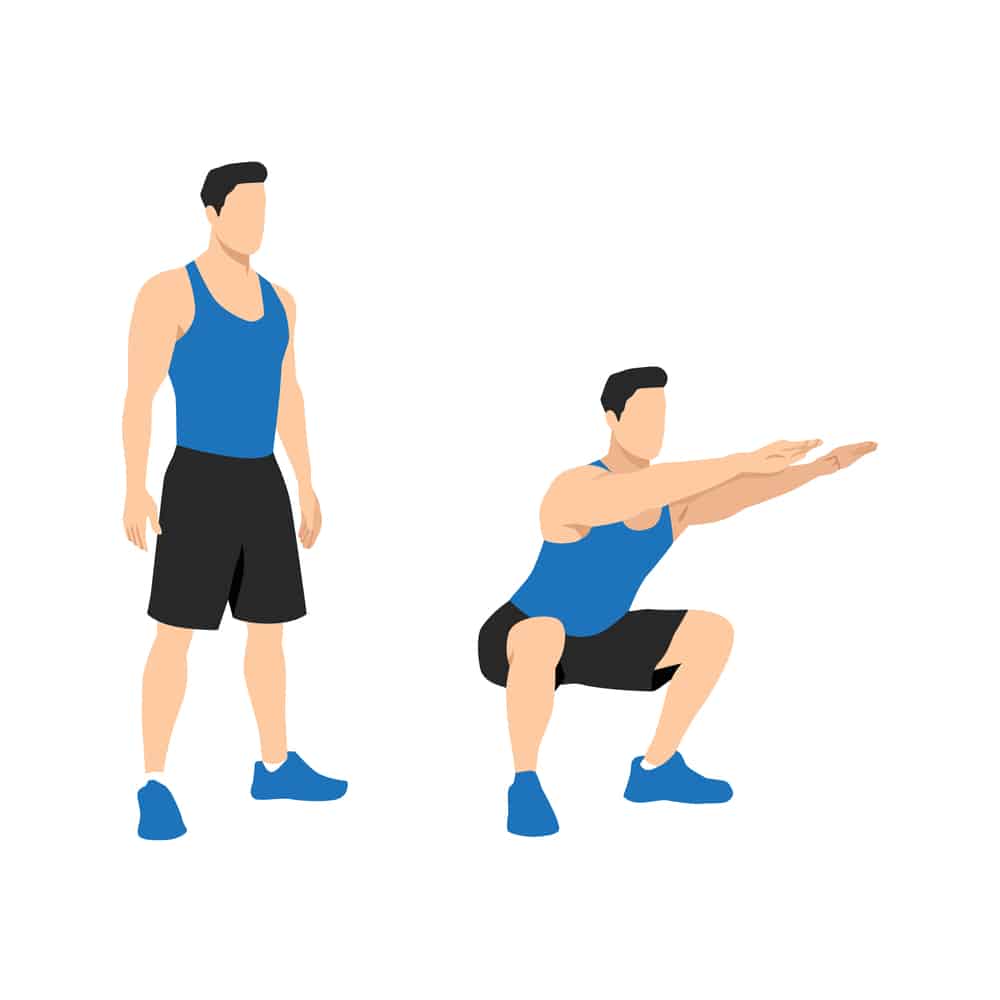
Squats With a Weight
The squat is one of the best knee rehabilitation exercises for bolstering the knees and easing pain. They focus on the hamstring, quadriceps, and buttock muscles. Place your feet hip-width away while standing tall and your toes pointed forward; slowly squat as comfortably as possible, keeping your knees back over your toes. After 10–30 repetitions, return to the starting position. Avoid bending your knees inward, and keep your kneecap in line with your second toe.
-
Bridging
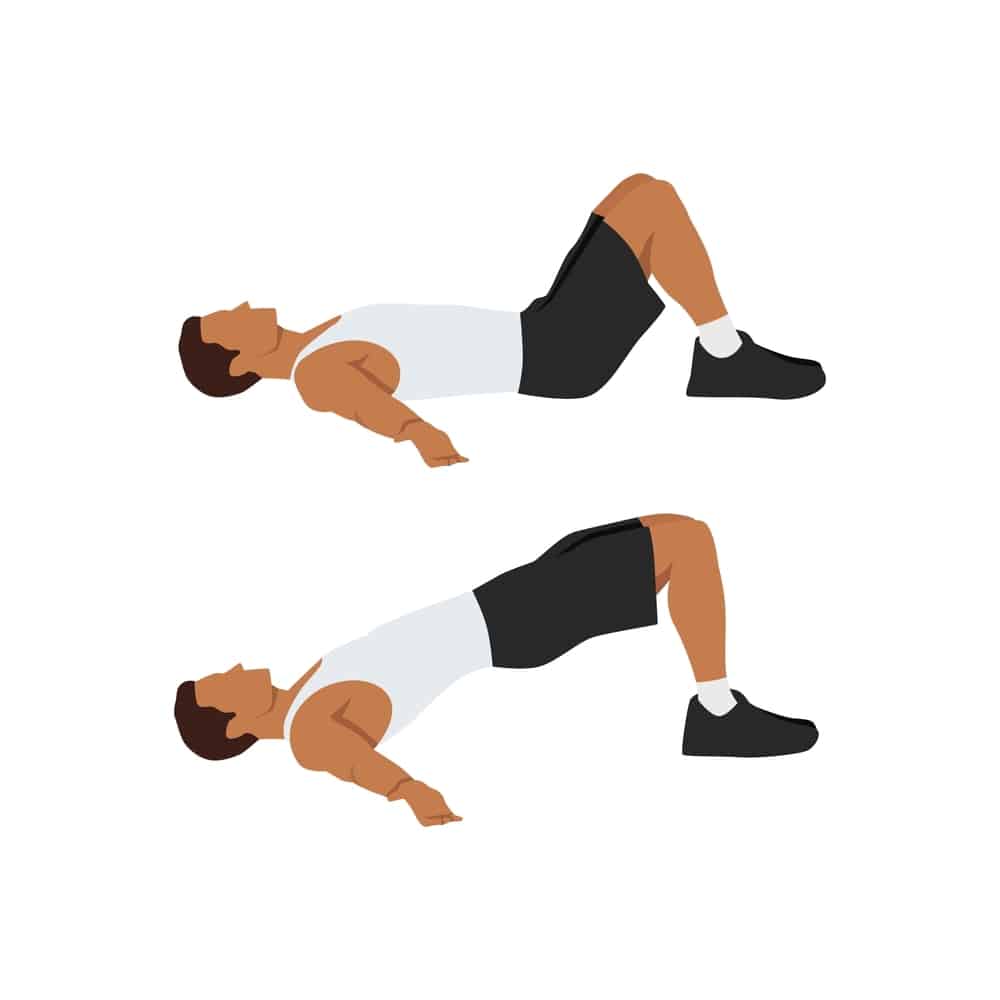
Bridging
This knee physiotherapy exercise is beneficial for building the hamstring, quadriceps, and buttock muscles during knee rehabilitation. If you haven’t previously, start with Bridging: stage 1. When you are lying on your back with your feet flat on the floor or a bed, you should bend your knees to approximately 90 degrees. Knees need to be a little apart (tennis ball width).
By squeezing your buttocks, raise your bottom as high off the bed as you can without arching your back. Then lift one leg for three to five seconds, then progressively lower. Keep your back straight; let your bottom handle the lifting rather than allowing your back to arch as you lift. Don’t hold your breath; keep it regular. Keep your knees separated by a tennis ball; avoid slipping out of position or locking them together. Lift hips as high as you can work out to prevent letting them drop.
PhysioTools: Knee Exercises
It’s imperative to rebuild strength and mobility after any knee problem. However, gradually returning to normal activity after a knee problem is the best way to get good short-and long-term results. When exercising, especially at first, you should pay close attention to how uncomfortable you feel. However, regular physiotools knee exercises can help to improve knee movement and should get easier with time. If the exercises make you uncomfortable, using the medication your doctor or pharmacist has prescribed may let you be persistent with your exercise routine.
Conclusion
Knee pain is common during a child’s development spurt, with injuries from falls or sports, or it might appear as we age from wear and tear. Knee discomfort might be brought on by muscles, ligaments, tendons, cartilage, or meniscus. It may also refer to the lower back or the hip joint. Knee arthritis can be uncomfortable and debilitating. Early self-care frequently makes a significant difference for knee osteoarthritis (OA). Stretching and building up the leg muscles that surround the joint is essential to support it and minimize pressure on the joint.
How can you book an appointment?
We aim to see you within 24 hours so contact us to make an appointment either online at www.primphysiocare.co.uk or to find out more information on how we can help you, please call us on 07515280990 or email us primephysiocareluton@gmail.com. We are one of the best clinics whose physios are registered with HCPC, CSP and Physio first as well have enormous experience.
Common FAQs
Q: What knee pain treatments can a physiotherapist offer?
A physiotherapist applies physical treatments, including soft tissue therapy and joint mobilizations, to help reduce any muscular tension or stiffness in the knee joint. They also employ TENS, hot packs, and ultrasound for knee pain treatment.
Q: How long does physical therapy for knee injuries last?
When the knee swelling has gone down and you can stand and walk without too much difficulty, doctors may suggest four to eight weeks of knee physiotherapy to build strength and flexibility in the thigh and leg muscles and restore a complete range of motion to the knee.
Q: When should I visit a physio to have my knee examined?
You shouldn’t be extremely concerned if a certain activity makes the pain worse and rest makes it feel better. However, if your knee soreness is sudden and unrelated to any exercise, you should consider visiting a physiotherapist if it persists for more than 48 hours.
Q: Does physical therapy improve knee arthritis?
Knee physiotherapy is tremendously beneficial for knee discomfort, whether you have an acute sporting injury or more persistent pain from osteoarthritis. Physiotherapists are a great way to improve because they know much about movement and function.
Q: What course of therapy is best for knee pain?
RICE (rest, ice, compression, and elevation) can ease knee pain caused by a small injury or an episode of arthritis. Rest, apply ice to reduce swelling, wrap it in a compression bandage, and keep your knee elevated. Pay attention to your weight.
Q: What are some good workouts for knee pain?
To strengthen your knees, focus on workouts that work your hamstrings, quadriceps, glutes, and hip muscles.
